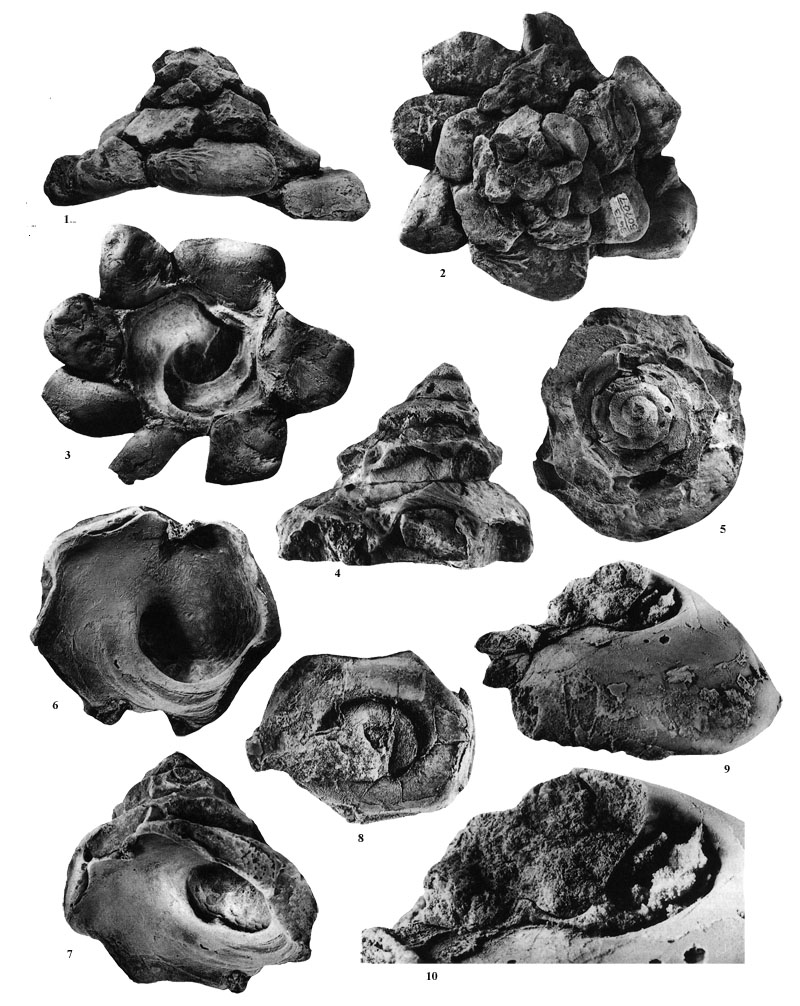Stromboidea
Original diagnosis:
- "Medium-large shell, high spire, angulate whorl profile, greatly depressed base with internal spiral ridge, keeled inner lip, and entire shell covered with closely spaced, small to very large pebbles."
Original description of Xenophora (Endoptygma) hermax by Squires and Saul, 2001:
- "Shell medium large (up to 95 mm in diameter), trochiform, about five whorls, whorl profile shouldered with blunt periphery; spire high, apical angle about 71 degrees; whorls angulate with a lowly sloping ramp, whorls apparently straight-sided (flat) anterior to ramp; suture distinct and impressed; entire teleoconch covered by closely spaced pebbles, attachment scars deeply embedded on anterior half of each whorl; shell surface (sans pebbles) smooth?; body whorl wide; base broad, greatly depressed, area near anterior end of inner lip with coarse growth lines, remainder of base smoothly coated by callus; base internally with a spiral ridge; aperture circular, inner lip bordered by a keel with a narrow peripheral flange; no umbilicus."
Locus typicus: Carlsbad, San Diego County, California State, USA
Stratum typicum: Point Loma Formation, Campanian to possibly early Maastrichtian, upper Cretaceous
Etymology: The species is named hermax, Greek, meaning a heap of stones.
Xenophora (Endoptygma) hermax in Squires & Saul, 2001; Copyright The Paleontological Society
- 1-3 holotype, SDSNH 50707; 4-7 paratype, SDSNH 34018; 8 paratype LACMIP 12816; 9-10 paratype LACMIP 12817
References:

